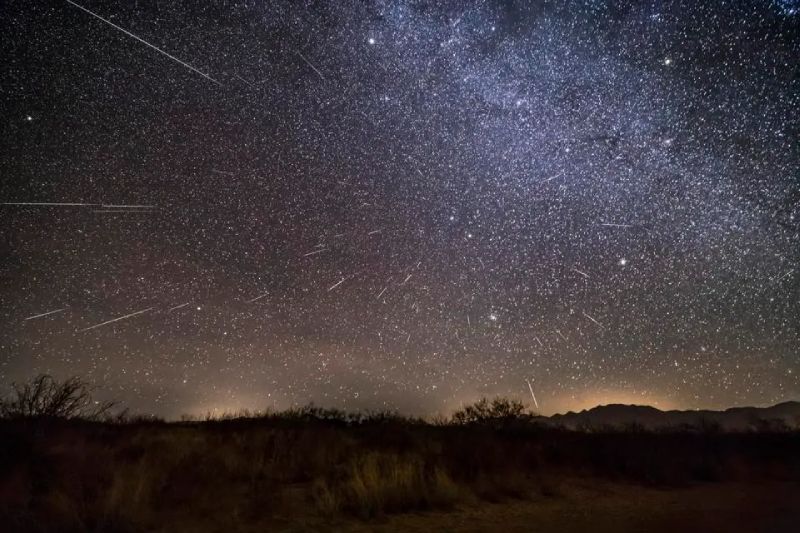There’s a short opportunity for astronomy enthusiasts to grab a glimpse of the celestial extravaganza.
NASA reports that the Quadrantid meteor shower will peak on Thursday after midnight.
One of the greatest yearly meteor showers is expected to occur during this first meteor shower of 2024. There’s a short opportunity for astronomy enthusiasts to grab a glimpse of the celestial extravaganza. The Quadrantid meteor shower peaks for only a few hours, whereas most meteor showers peak over two days. In ideal circumstances, one can witness between sixty and 200 meteors each hour during the peak.
When and where will the meteor shower known as the Quadrantids occur?
According to NASA, the ideal times to watch the Quadrantids, which are scattered across the night sky, are at night and just before dawn in the Northern Hemisphere.
NASA recommends that people see meteor showers far from street and city lights. Those who enjoy astronomy should lie flat on their backs, point their feet south, and gaze upward. Your eyes need to acclimate to the darkness for approximately thirty minutes before you can see the meteors.
Carry a sleeping bag or blanket in case the weather turns cool.
What is unique about the Quadrantids?
NASA states that the meteor shower is well-known for its brilliant fireball meteors. According to the space agency, fireballs are brighter, longer-lasting bursts of color and light that resemble average meteor streaks.
The Quadrantids will travel at a pace of roughly twenty-five miles per second across the sky.
While comets are the source of most meteor showers, the asteroid 2003 EH1 is the source of the Quadrantids. On March 6, 2003, a tiny asteroid was detected.
NASA claims that the Quadrantids originate from the now-obsolete constellation Quadrans Muralis. Although it is no longer officially recognized as a constellation, Quadrans Muralis was long enough to be associated with the yearly meteor shower that bears its name. The moniker helps viewers identify which shower they are viewing; the constellation is not the real source of the meteors.
A meteor shower: what is it?
Although space rocks known as meteors, which enter Earth’s atmosphere, streak across the sky every night, NASA reports that there are many meteor showers annually. Meteor showers are episodes when a large number of meteors strike Earth’s atmosphere quickly. The hot, blazing air created when meteorites rush through Earth’s atmosphere is what causes the light streaks.
While the majority of meteors burn up as they fall, some make it to Earth. They are regarded as meteorites.
Up until January 16, 2024, the Quadrantids are in operation. The next meteor shower of the year, the Lyrids, won’t occur until April.





